Cameroon, located in the western region of Africa, is known for its lush tropical rainforest and diverse wildlife. Among the many species that call Cameroon home are its bird population, which is made up of a wide variety of species.
From hummingbirds to parrots, Cameroon is home to a number of bird species that have adapted to the various habitats within the country. This article will explore the different species of birds that can be found in Cameroon and their unique characteristics.
1. Mount Cameroon Spurfowl
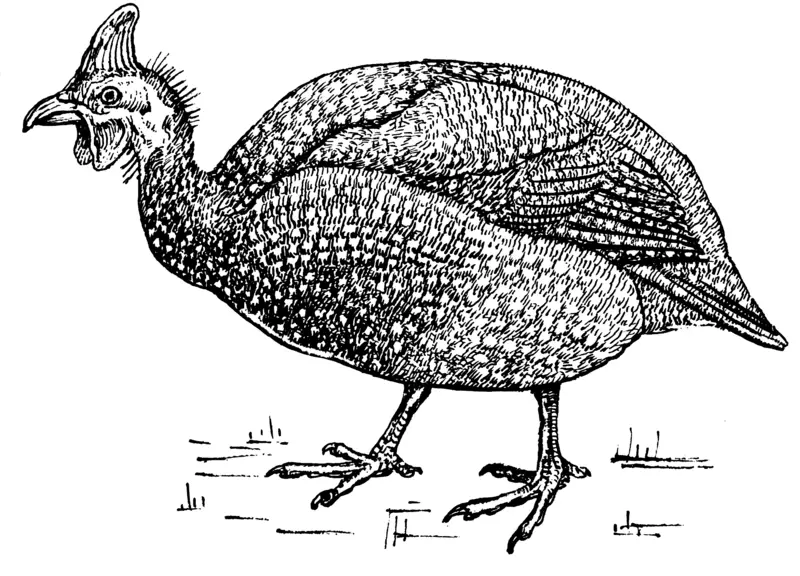
The Mount Cameroon Spurfowl is a unique species of bird found exclusively in the mountains of Cameroon. It has an unmistakable plumage, with its distinct black and white feathers, as well as red-tipped wings and tail.
Its natural habitat consists mainly of subtropical or tropical moist montane forests which are unfortunately threatened by deforestation and other human activities.
First described in 1909 by British Army Officer Boyd Alexander from one specimen collected on Mt Cameron itself, it’s now considered vulnerable to extinction due to these threats.
Conservation efforts need to be implemented soon if we want this beautiful creature around for future generations.Scientific classification:
| Kingdom | Animalia |
| Phylum | Chordata |
| Class | Aves |
| Order | Galliformes |
| Family | Phasianidae |
| Genus | Pternistis |
| Species | P. camerunensis |
2. Bannerman’s Turaco
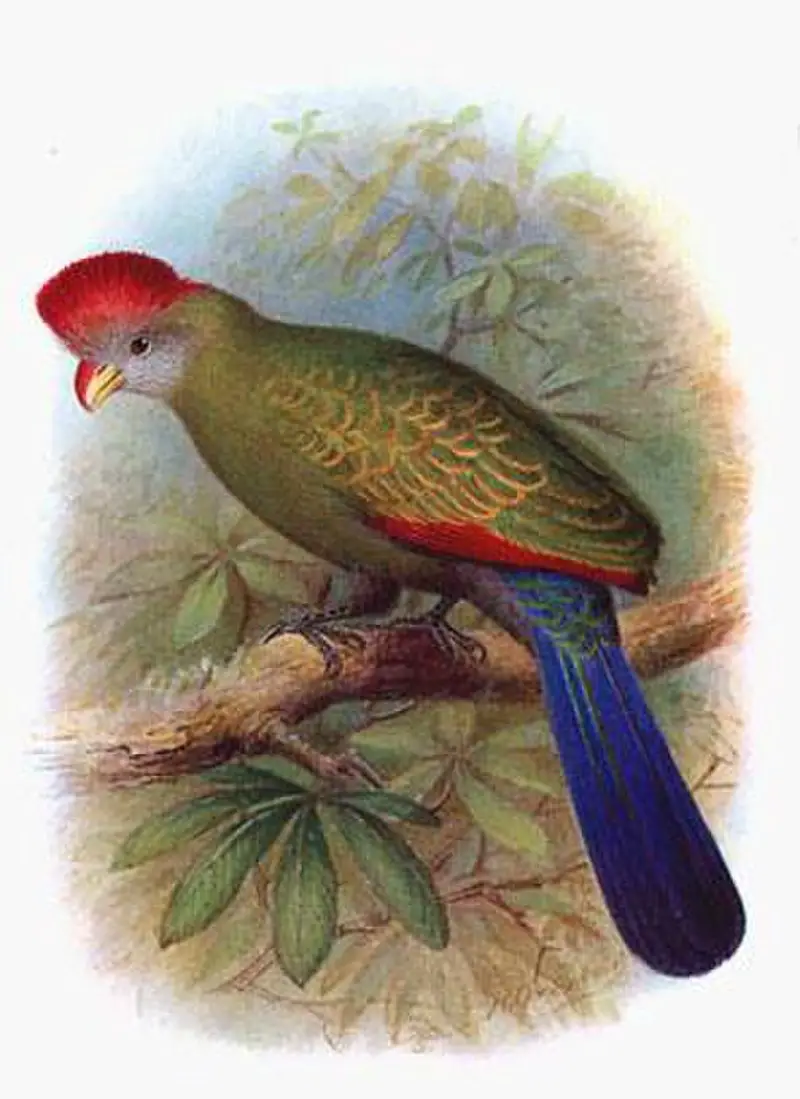
Bannerman’s turaco is a species of bird that belongs to the Musophagidae family and it can only be found in Cameroon. It has been named after ornithologist David Armitage Bannerman, who dedicated his life to nature and wildlife conservation.
This beautiful creature resides in subtropical or tropical moist montane forests, which unfortunately are being destroyed due to human activity.
Due to this destruction, its population has gone into decline and as such it is now considered an endangered species by the International Union for Conservation of Nature (IUCN).
Hopefully efforts will soon be taken so that we can mitigate their loss before they become extinct from our planet forever.Scientific classification:
| Kingdom | Animalia |
| Phylum | Chordata |
| Class | Aves |
| Order | Musophagiformes |
| Family | Musophagidae |
| Genus | Tauraco |
| Species | T. bannermani |
3. Monteiro’s Bushshrike
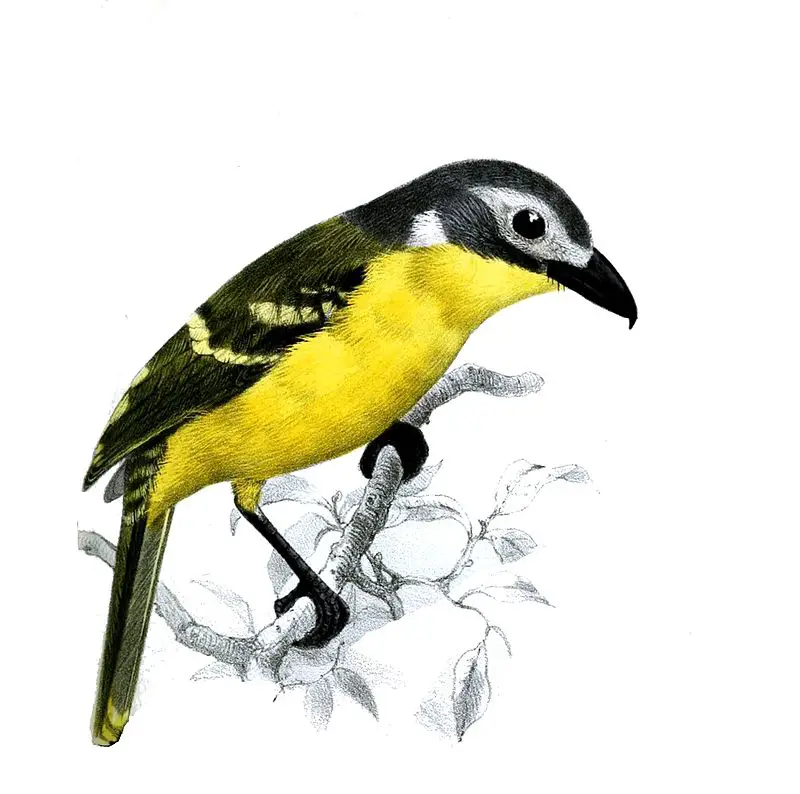
Monteiro’s bushshrike is a species of bird in the Malaconotidae family. It has two known subspecies: nominate monteiri and perspicillatus. The latter differs from the former by having a larger bill and paler undersides.
These birds are found mainly in Angola but have also been sighted in Cameroon too, although only one specimen was recorded there.
They typically inhabit open savannahs with scattered trees where they feed on insects such as grasshoppers, caterpillars, beetles and cicadas amongst others.
This species is threatened due to habitat destruction caused by human activities like deforestation or agricultural expansion which reduces its food sources significantly leading to population decline over time if not addressed soon enough.Scientific classification:
| Kingdom | Animalia |
| Phylum | Chordata |
| Class | Aves |
| Order | Passeriformes |
| Family | Malaconotidae |
| Genus | Malaconotus |
| Species | M. monteiri |
4. Cameroon Olive Pigeon
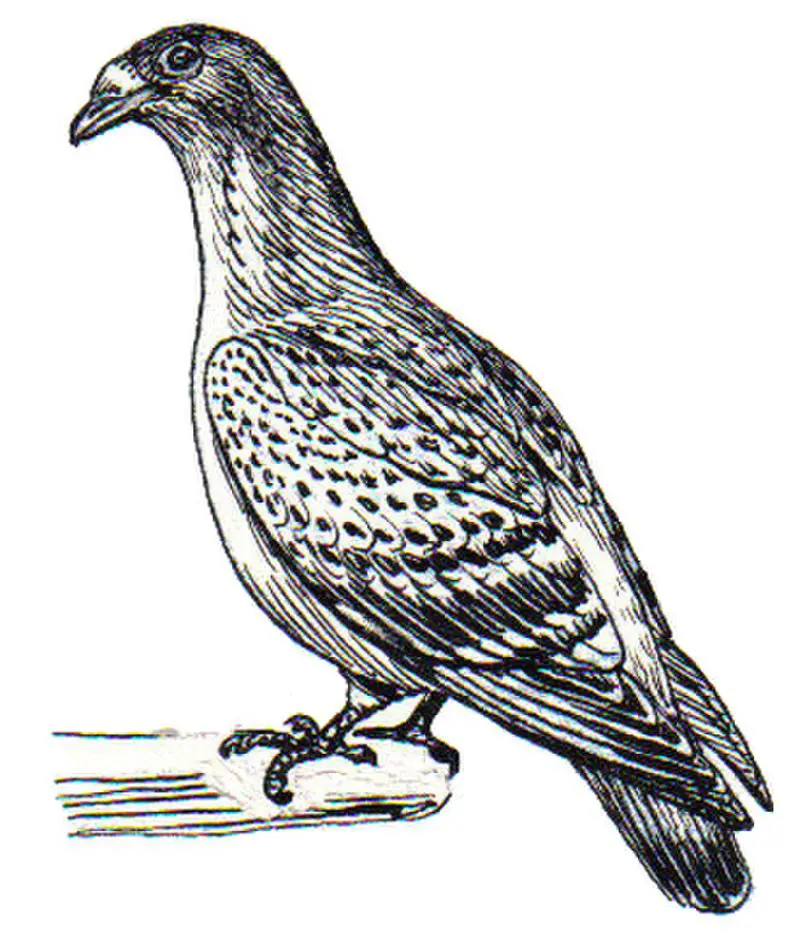
The Cameroon olive pigeon is a species of bird native to the Cameroon line, which includes Bioko. It belongs to the Columbidae family and has an overall greyish-green coloration with white spots on its wings.
Its head is brown in color and it features a distinctive red eye ring around each eye. This species can be found perched among trees or flying low over grasslands and open woodlands searching for food such as fruits, seeds, grains, buds, shoots and some insects.
Their loud cooing calls are often heard echoing through their range during breeding season when they become more active looking for mates before settling down into monogamous pairings that last throughout the year.
The conservation status of this beautiful bird remains unknown but efforts should be taken towards protecting them from any threats posed by human activities like deforestation or hunting so future generations may continue admiring these wonderful creatures in their natural habitat.Scientific classification:
| Kingdom | Animalia |
| Phylum | Chordata |
| Class | Aves |
| Order | Columbiformes |
| Family | Columbidae |
| Genus | Columba |
| Species | C. sjostedti |
5. Grey-Necked Rockfowl
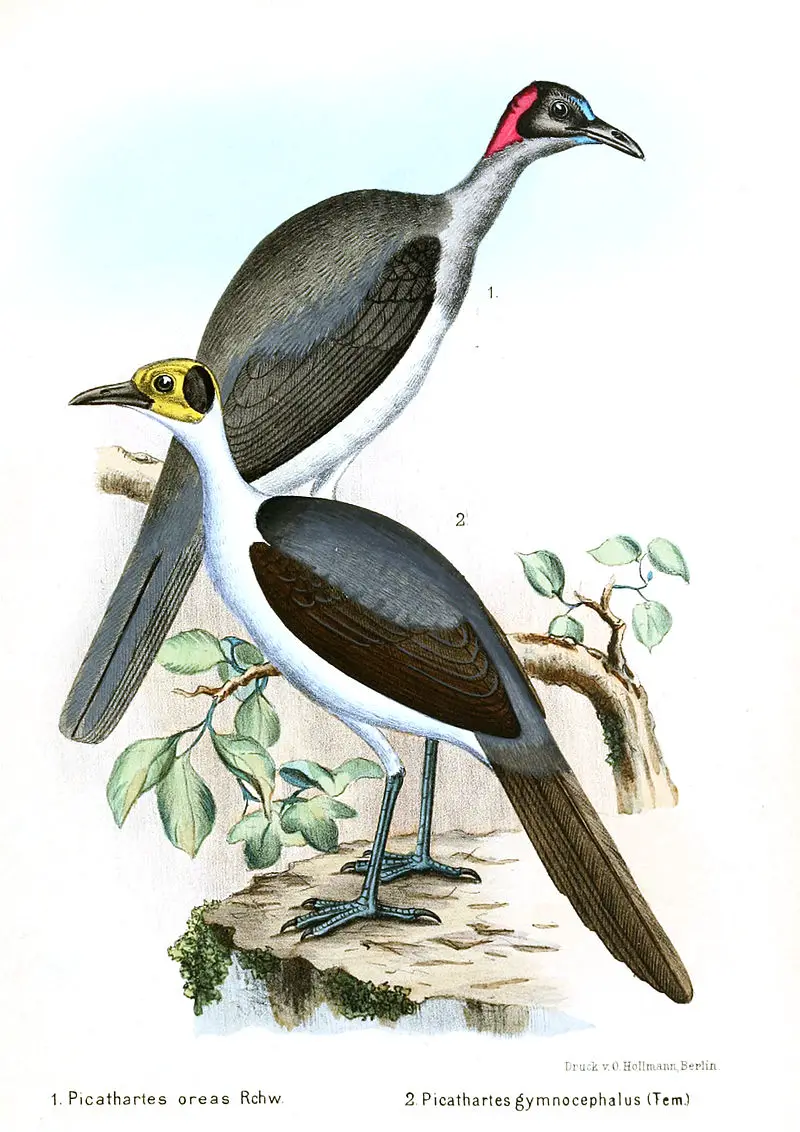
The Grey-necked Rockfowl is a magnificent bird found in rocky areas of close-canopied rainforest from south-west Nigeria to Cameroon, Equatorial Guinea and Gabon.
On the island of Bioko it can also be seen. It has an unmistakable look with its long neck and tail, grey upperparts contrasted with white underparts that give it a remarkable appearance.
It usually feeds on insects, lizards, small mammals as well as fruits while hopping nervously around rocks or perching atop them searching for food items.
Its population appears threatened due to habitat destruction caused by human activities such as logging and mining which have reduced suitable nesting sites amongst other factors like predation by cats or snakes etcetera.
Thus conservation efforts should be made so we don’t lose this species forever.Scientific classification:
| Kingdom | Animalia |
| Phylum | Chordata |
| Class | Aves |
| Order | Passeriformes |
| Family | Picathartidae |
| Genus | Picathartes |
| Species | P. oreas |
6. Mount Kupe Bushshrike
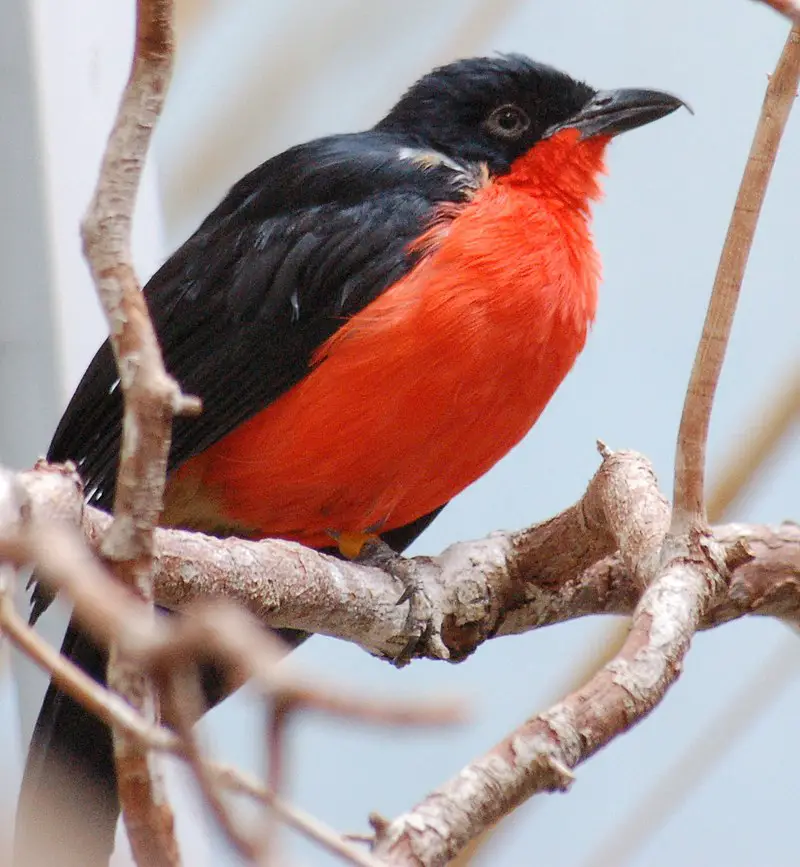
The Mount Kupe Bushshrike is a beautiful species of bird that is found in Cameroon and South-East Nigeria. It has stunning plumage, with its head being blackish-brown and the back, wings and tail being grey.
The underparts are white with some brown barring on the chest, flanks and vent area. This unique species inhabits moist montane forests from sea level to 3200m high.
Unfortunately it’s facing threats due to habitat loss caused by logging activities which puts this magnificent creature at risk of extinction if conservation measures are not taken.
Conservation efforts should focus on protecting the remaining forest habitats where these birds can thrive without disturbance form humans so future generations will be able to enjoy them for years to come.Scientific classification:
| Kingdom | Animalia |
| Phylum | Chordata |
| Class | Aves |
| Order | Passeriformes |
| Family | Malaconotidae |
| Genus | Chlorophoneus |
| Species | C. kupeensis |
7. Banded Wattle-Eye
The Banded Wattle-eye is a species of bird found only in the Bamenda Highlands of western Cameroon. This beautiful small bird has distinctive white and black stripes on its head, chest and wings that give it an attractive look.
It lives in subtropical or tropical moist montane forests, but unfortunately these areas are being threatened by habitat loss which puts this unique species at risk.
The diet of the banded wattle-eye consists mostly of insects such as caterpillars and beetles which they catch with their sharp eyesight during flight.
They also feed on fruits when available to supplement their diets. If we do not take action soon then this majestic creature may be lost forever due to our neglecting nature’s delicate balance.
So let us work together to ensure that future generations can continue enjoying the beauty of this amazing bird.Scientific classification:
| Kingdom | Animalia |
| Phylum | Chordata |
| Class | Aves |
| Order | Passeriformes |
| Family | Platysteiridae |
| Genus | Platysteira |
| Species | P. laticincta |
8. Bamenda Apalis
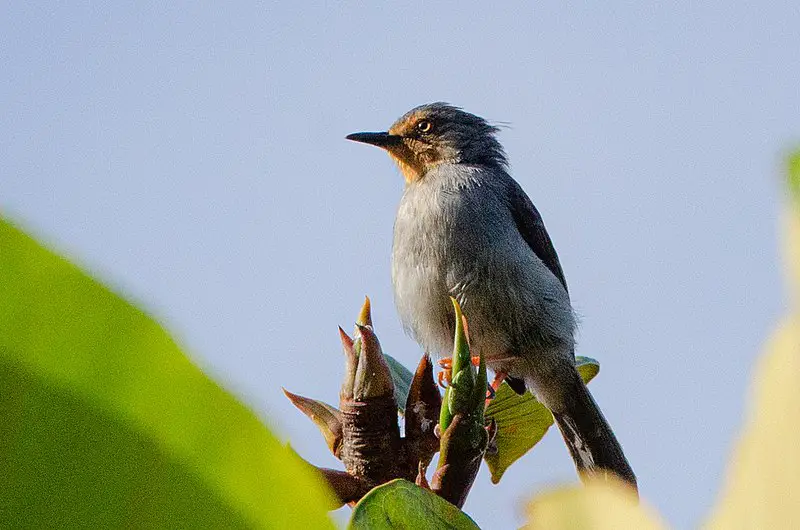
The Bamenda apalis is a species of bird that belongs to the family Cisticolidae and it is endemic to Cameroon. This small greyish-green coloured bird can be found living in subtropical or tropical moist lowland forests as well as dry savannas, however its numbers are declining due to habitat loss which threatens its existence.
The Bamenda apalis feeds on insects and other invertebrates such as spiders, moths and caterpillars amongst others. It usually forages high up in trees but may also come down lower in search for food if necessary.
In terms of reproduction this species builds nests with both male and female taking partin construction work before laying their eggs inside the nest cavity where they will stay until hatching time arrives.Scientific classification:
| Kingdom | Animalia |
| Phylum | Chordata |
| Class | Aves |
| Order | Passeriformes |
| Family | Cisticolidae |
| Genus | Apalis |
| Species | A. bamendae |
9. Grasshopper Buzzard
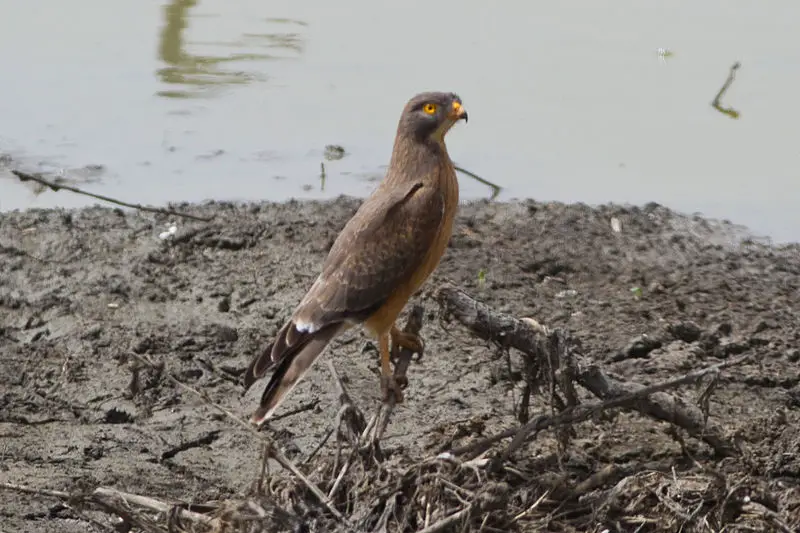
The Grasshopper Buzzard is a species of bird of prey found in sub-Saharan Africa north of the equator. It forms a superspecies with three other buzzards, all from Asia: White-eyed Buzzard, Rufous-winged Buzzard and Grey-faced Buzzard.
The adult has grey upperparts and white underparts with black streaks on its chest. Its head is dark brownish grey while its tail is pale buff barred with dark brown bands.
This medium sized raptor typically hunts grasshoppers or small rodents from a perch but may also soar high to search for prey using their keen eyesight over open country or forest edges.
They are mainly monogamous birds nesting on large trees at the edge of woodlands where they lay up to three eggs which hatch after an incubation period lasting between 28 – 32 days long by both parents taking turns feeding them food items such as frogs, lizards and insects until fledging almost six weeks later when they leave the nest independently before fully matured into adulthood when they reach two years old.Scientific classification:
| Kingdom | Animalia |
| Phylum | Chordata |
| Class | Aves |
| Order | Accipitriformes |
| Family | Accipitridae |
| Genus | Butastur |
| Species | B. rufipennis |